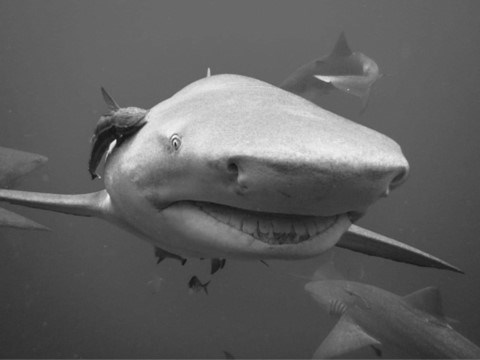Last updated: July 24, 2024
Article
Sharks of Canaveral National Seashore

NPS/Photo Sarah Sumrall
The Indian River Lagoon is historically the northern most shark nursery in the United States though nursery habitats are increasingly moving north due to temperature changes. It serves as a nursery for many other species of fish as well. Bull sharks are routinely born in the Indian River Lagoon. In the summer the waters in the lagoon stay warmer which helps these young pups grow. Other types of sharks that visit park waters are the Blacktip, Sandbar Shark, Lemon Shark, and the Scalloped Hammerhead.
Sharks as well as rays and skates are all referred to a subclass called the elasmobranchs. This group has cartilaginous skeletons and five gills. A standard fish has a boney skeleton and one gill. Also elasmobranchs have no swim bladder. Both sharks and rays have ampulae of Lorenzini which are the electric sensors near their mouths which help them find prey. Quite a few different species of rays inhabit the seashore either in the lagoon or on the ocean side: Southern Stingray, Atlantic Stingray, Bluntnose Stingray, Smooth Butterfly Ray, Spotted Eagle Ray, Cownose Ray.
While their skeletons are made of cartilage, their teeth are boney. Sharks have approximately 5 rows of teeth. Given that the teeth do not have roots, like ours do, they fall out quite often. This corresponds with finding them on the beach. For most of us, finding their teeth is as close as we want to get to a shark! However a few thrill seekers such as our volunteer Sarah enjoy the excitement of up close encounters. Ocearch is a way for the rest of us to live vicariously through these thrill seekers. This company has an App that you can download and view migratory patterns of some of wildlife such as Great Whites, Bull Sharks, Tiger Sharks and even the park favorite the sea turtle.
Sharks are a vital component to the ecosystem. This apex predator is often at the top of the foodweb. The amount and distribution of their prey in the foodweb correlates to their feeding behaviors. For example, fear of falling prey to a lurking shark may keep a sea turtle moving around a sea grass bed in the lagoon. This in turn helps the sea grass beds by keeping them from being overharvested in one area. Other species known as hitch hikers are found in close proximity to shark, rays and sea turtles. These species add to the food web either directly or indirectly. So how can you help sharks? Try to not use makeup products with squalene in the ingredients, foster positive conversations about sharks and support ecotourism which highlights wildlife preservation.
